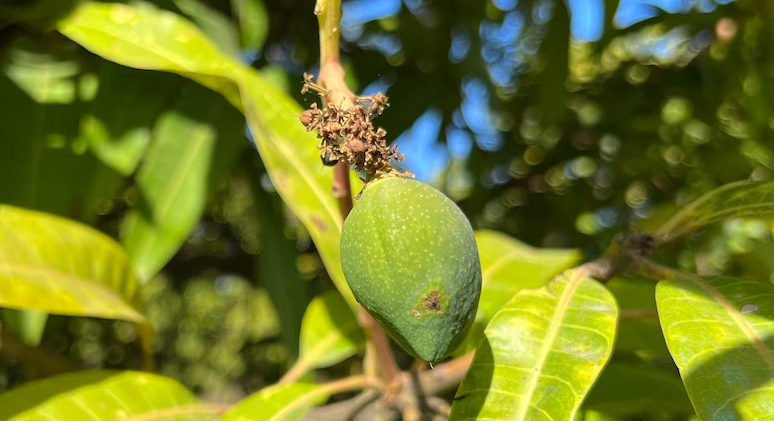SOURCE: Lucy Cooper, ABC Rural
A warmer-than-average Queensland winter will see fewer Australian mangoes on supermarket shelves this Christmas.
Mangoes need a few chilly weeks to bring on the conditions needed to flower.
This year, the weather has been too balmy for fruit set, which growers say will result in fewer mangoes on the shelves this season.
David Lawrence from Manbulloo Mangoes manages 18,000 trees at Giru in the Burdekin.
Manbullo is Australia’s largest grower of Kensington Pride, or Bowen mangoes, as they’re known to many consumers.
“We’ve had a couple [nights] below 12 degrees Celsius, but not consecutively,” he said.
“The coldest days have been around that 16C as minimums, so it’s not optimal.
“We’re probably sitting at about 30 per cent of our usual yield at the moment.
Senior climatologist for the Bureau of Meteorology, Greg Browning, said that night-time temperatures have been above average.
“It has been a warm winter,” he said.
“So temperatures, maximums and minimums have been around a degree above the long-term average” he said.
It’s a scenario North Queensland mango growers will have to get used to.
“We can expect a couple of warm years coming up, and that trend [of warming] will be a little bit stronger than it has been in the past few years,” Mr Browning said.
But with warmer spring temperatures on the way, there’s optimism that the small number of mangoes will grow in time for Christmas.
According to Mr Lawrence, the harvest is expected to run from the last weekend of November through to Christmas.
Small but mighty mangoes
News of lower-than-average yields has mango lovers such as consumer Michelle Woodward concerned.
“We will be devastated. Mangoes have always been part of Christmas. It’s just so refreshing and something really simple and cool to eat,” she said.
But David Lawrence said consumers should still support North Queensland farmers despite low yields, as quality has not been compromised.
“We’ll still have the best quality mangoes, but just won’t be as many this year,” he said.
“That’s just farming and nature’s cycle.
“It’s never always going to be the same every year.
“There’s a lot of different factors involved, like colder weather and longer wet seasons.”

